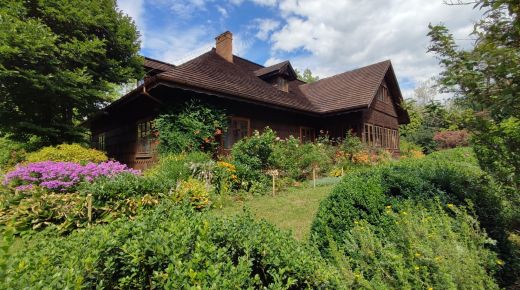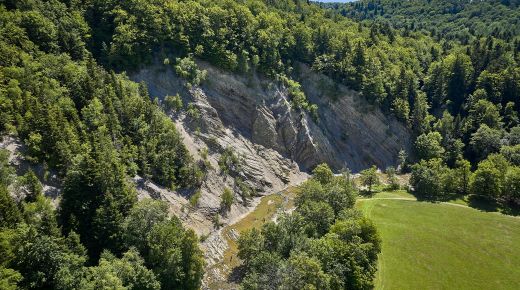The findings discovered here provide evidence that this area was influenced by cultures existing then in the Mediterranean Basin (e.g. ancient Troy)
After the place had been deserted for centuries, Slavic people (tribe of Vistulans) settled down here around 780-790 AD, and they built a large hillfort comprising an area of three hectares. Today we can still clearly see earthen walls, at times 10 metres high. Indeed, we cannot help but be amazed seeing the monumental dimensions and the engineering complexity of the structures.
Carpathian Troy is a large outdoors exposition, branch of Podkarpackie Museum in Krosno. It was created at the location of the most important archeological sites holding relics of one of the oldest hillforts in Poland. Today named the Royal Earthworks, the settlement is dated to the early Bronze Age. The exposition presents reconstructions of over 150 metre long defensive walls, two entrance gates and six huts. In the archeological park we can visit a reconstructed village of the Otomani peoples, from the early Bronze Age, as well as an early medieval settlement of Slavic people.
Visitors can learn about early Bronze Age and medieval cultures during events organized here, most notably during the Carpathian Archaeological Festival ‘Two Faces’. On this occasion visitors can watch knights tournaments and presentations of ancient crafts.
READ MORE ABOUT HISTORICAL TOURISM AND MILITARY IN THE LOW BESKID
READ ALSO ABOUT Carpathian Troy Open Air Exposition in Trzcinica in Low Beskid
Worth seeing:
Carpathian Troy Open air Exposition in Trzcinica
- St. Dorothea’s church from the 16th (or possibly late 15th) century
Photo by Krystian Kłysewicz



.JPG)